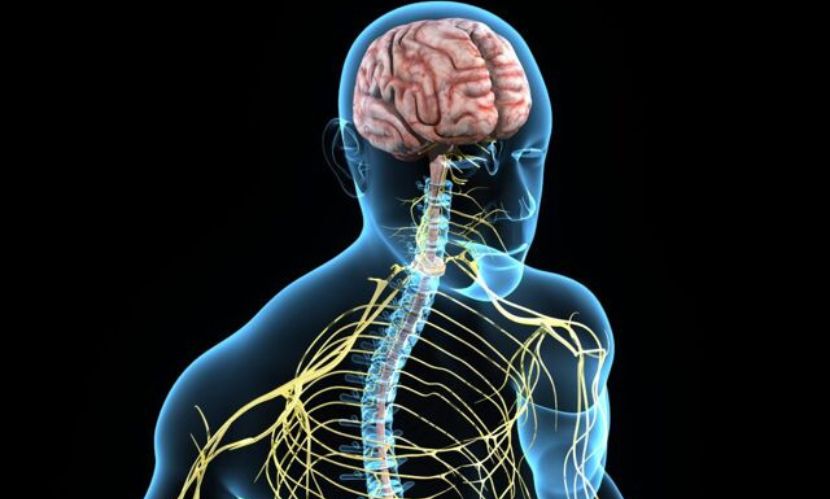Amyotrophic Lateral Sclerosis Market Overview
The Amyotrophic Lateral Sclerosis (ALS) market is witnessing steady expansion due to rising global prevalence of ALS, especially sporadic ALS, coupled with an aging population highly susceptible to neurodegenerative disorders. ALS, also known as Lou Gehrig’s disease, is a progressive neurological condition that severely impacts motor neurons, causing muscle weakness and disability. With no definitive cure, treatment focuses on slowing progression, managing symptoms, and improving quality of life. Increasing R&D investments, innovative drug pipelines, and expanding access to healthcare services are driving market demand. The market is positioned for consistent growth between 2025 and 2034, supported by novel therapeutic advancements.
Amyotrophic Lateral Sclerosis Market Size
The global ALS treatment market was valued at USD 791.90 million in 2024 and is projected to grow at a CAGR of 5.40% during 2025–2034. By the end of 2034, the market is anticipated to reach a significantly larger valuation, fueled by rising demand for effective therapeutic solutions. Growth is primarily attributed to the development of disease-modifying drugs, advanced symptomatic therapies, and greater awareness initiatives. Increasing clinical trial activity and regulatory approvals of novel therapies are also expanding the market size. North America holds the largest market share, while Asia-Pacific is expected to grow at the fastest pace.
Amyotrophic Lateral Sclerosis Market Share
The ALS market share is dominated by established pharmaceutical players and biotech companies investing in R&D for disease-modifying therapies. North America contributes the largest revenue share due to advanced healthcare infrastructure, high diagnosis rates, and strong research collaborations. Europe follows closely, driven by government initiatives and growing patient advocacy. Meanwhile, Asia-Pacific is experiencing rapid growth due to rising healthcare investments and awareness. Within the competitive landscape, companies like Biogen, Mitsubishi Tanabe Pharma, and Amylyx Pharmaceuticals hold strong positions, particularly with FDA-approved drugs such as Riluzole and Radicava. Emerging biotechs are also capturing increasing market share through novel innovations.
Amyotrophic Lateral Sclerosis Market Trends
Key ALS market trends include the surge in gene-targeted therapies, stem cell research, and disease-modifying treatments. The adoption of personalized medicine and the use of biomarkers in diagnosis and monitoring are transforming patient care. Digital health platforms, telemedicine, and AI-based tools are enhancing disease management, especially for remote patient monitoring. Regulatory bodies are accelerating drug approvals through orphan drug designations and fast-track status, encouraging innovation. Additionally, collaborations between pharmaceutical companies, research institutions, and patient advocacy groups are fostering progress. The integration of multidisciplinary care, from pharmacological therapies to assistive technologies, marks a significant trend shaping ALS treatment outcomes.
Amyotrophic Lateral Sclerosis Market Analysis
The ALS market analysis highlights a steady growth trajectory between 2025 and 2034. Rising incidence rates, particularly of sporadic ALS, coupled with the growing geriatric population, are fueling treatment demand. Current approved drugs such as Riluzole, Radicava, and newly introduced formulations provide only modest benefits, leading to a significant unmet need for more effective therapies. This unmet demand is a key factor driving extensive R&D investments by pharmaceutical companies.
Furthermore, government initiatives, orphan drug incentives, and growing patient advocacy groups are contributing to innovation. The increasing participation in clinical trials across North America, Europe, and Asia-Pacific is a positive sign for market expansion. High treatment costs, however, remain a barrier to adoption in developing nations. Nevertheless, the pipeline for novel drug candidates, including antisense oligonucleotides, stem cell therapies, and neuroprotective agents, suggests that the ALS treatment landscape will continue to evolve, offering better outcomes in the future.
Request a Free Copy of the Report with Table of Contents
Amyotrophic Lateral Sclerosis Market Segmentation
The ALS treatment market can be segmented into:
- By Treatment Type
- Medication: Riluzole, Edaravone, and pipeline drugs
- Stem Cell Therapy
- Gene Therapy
- Symptomatic Treatments
- By Route of Administration
- Oral
- Intravenous
- Others (injections, infusions)
- By Distribution Channel
- Hospital Pharmacies
- Retail Pharmacies
- Online Pharmacies
- By End-User
- Hospitals
- Specialty Clinics
- Research Centers
- By Geography
- North America (largest market share)
- Europe
- Asia-Pacific (fastest growing)
- Latin America
- Middle East & Africa
This segmentation provides a comprehensive view of how the market is structured and where the growth opportunities lie, helping stakeholders focus on high-demand treatment categories and emerging regions.
Amyotrophic Lateral Sclerosis Market Growth
The ALS market growth is fueled by rising disease prevalence, increasing healthcare spending, and expanding drug pipelines. The CAGR of 5.40% (2025–2034) reflects steady demand for innovative treatments. Regulatory incentives, such as orphan drug status, continue to encourage pharmaceutical R&D, while advances in precision medicine and gene-based therapies are expected to accelerate progress. Growing collaborations between biotech companies and academic institutions further enhance growth opportunities. Moreover, improved diagnostic tools and heightened awareness campaigns are leading to earlier diagnoses, boosting treatment adoption. With expanding healthcare access in emerging economies, the ALS market is set for sustainable long-term growth.
Recent Developments and Challenges in the Amyotrophic Lateral Sclerosis Market
Recent years have seen remarkable advancements in the ALS market. The approval of novel drugs such as Radicava ORS and Relyvrio has improved treatment options, while ongoing clinical trials for antisense oligonucleotides, stem cell therapies, and gene-editing approaches promise significant breakthroughs. Collaborations between pharmaceutical companies, universities, and patient advocacy organizations are accelerating drug discovery. Additionally, the growing use of digital health solutions and AI is transforming disease monitoring and patient care.
Despite progress, challenges remain. The high cost of therapies limits accessibility, particularly in low- and middle-income countries. Limited treatment efficacy and a lack of curative therapies continue to be major obstacles. Regulatory hurdles, long clinical trial durations, and the rarity of ALS cases also slow down drug development. Addressing these challenges through innovative research, public-private partnerships, and broader healthcare access policies will be critical for the future of the ALS market.
Key Players in the Amyotrophic Lateral Sclerosis Market
The competitive landscape of the ALS market features both established pharmaceutical companies and innovative biotech firms. Major players include:
- Mitsubishi Tanabe Pharma Corporation (Mitsubishi Chemical Group Corporation) – Developer of Radicava (Edaravone) for ALS treatment.
- Biogen – Focused on neurodegenerative diseases and antisense oligonucleotide therapies.
- BrainStorm Cell Limited – Leading in stem cell therapy research with NurOwn.
- Amylyx Pharmaceuticals, Inc. – Developer of Relyvrio, a recently approved ALS drug.
- Ionis Pharmaceuticals, Inc. – Specializes in antisense therapies for genetic ALS.
- Sanofi – Investing in research collaborations for ALS therapies.
- AB Science – Developing masitinib, an oral therapy showing promise in clinical trials.
- Sun Pharmaceutical Industries Ltd. – Expanding ALS treatment options in emerging markets.
- Orion Corporation – Engaged in neurological drug development.
- CORESTEMCHEMON Inc. – Active in stem cell therapy development for ALS.



